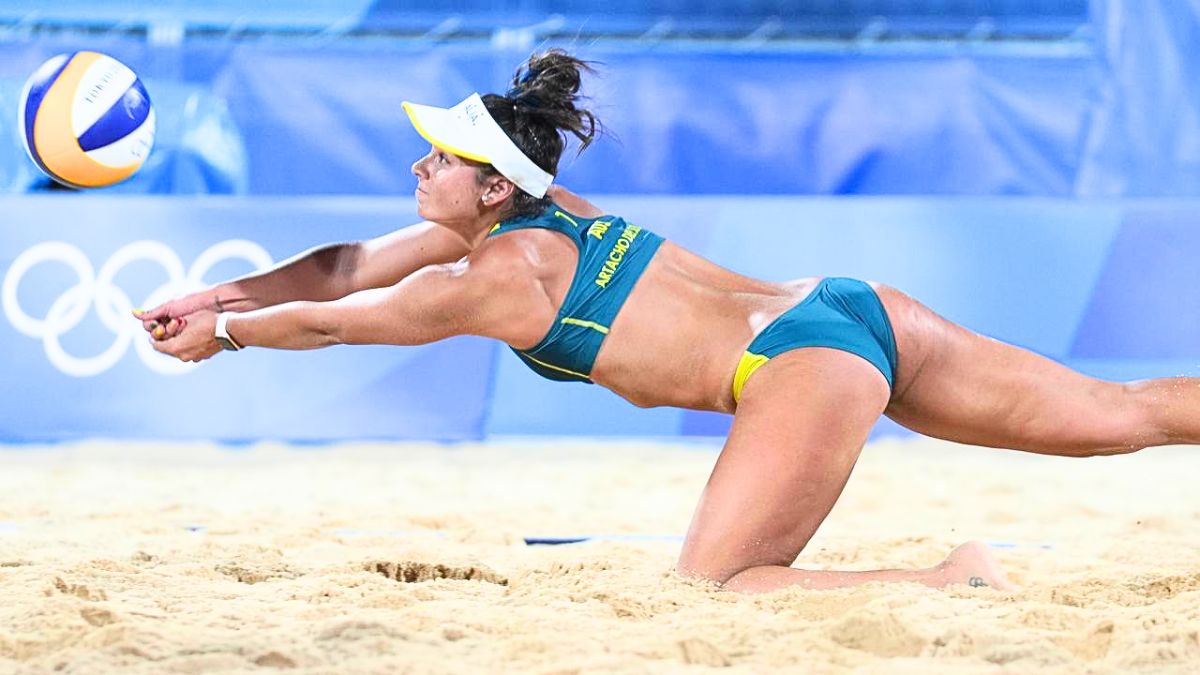Beach volleyball, a dynamic and thrilling sport played on sandy courts under the sun’s warm embrace, has captivated the hearts of sports enthusiasts worldwide. With its fast-paced action and display of athleticism, this variant of traditional indoor volleyball brings a unique charm to the game.
Also Read: India Men’s and Women’s volleyball team claim top honors at SAG 2019
Let’s understand the rules and regulations of beach volleyball to appreciate the strategic intricacies and competitive spirit that define this exhilarating sport.
Court and Equipment
A beach volleyball court measures 16 meters in length and 8 meters in width, divided by a net whose height is 2.43 meters for men and 2.24 for women. The court is divided by a net, and each team occupies one side. Unlike indoor volleyball, where teams have six players, beach volleyball teams consist of only two players. The teams are free to decide the order of serve and receive.
Scoring
Beach volleyball employs the rally scoring system, where a point is awarded after every rally regardless of which team served. Beach Volleyball matches typically consist of three sets. Both teams play the initial two sets until one team reaches 21 points. A third set could decide the winner if the first two sets are tied. The third set is limited to 15 points to equal the points and secure the victory, and teams must maintain a lead of at least two points over their opponents.
Rotations
In beach volleyball, players do not rotate in the same manner as indoor volleyball. Instead, the players remain in the same serving and receiving positions throughout the set. When a team wins the serve from the opposing team, the player in the right-back position serves the ball. After each point, the players switch sides but retain their respective serving and receiving positions.
Touches and Hits
A team is allowed to touch the ball maximum of three times to return the ball over the net. The most common sequence involves a bump (forearm pass), a set (overhead pass), and a spike (attack). A player isn’t allowed to hit the ball twice in sequence except during a block, and a block is not considered a touch. Players can contact the ball with any body part if the touch is clean and within the rules.
Blocking and Attacking
Blocking is a crucial aspect of beach volleyball. A block is counted as one of the three allowable touches on the ball, and if it deflects back to the blocking team’s side, they have two more touches to return the ball. A player at the net can reach beyond the net to block as long as they do not interfere with the opponent’s play. Spiking, or attacking, is a decisive offensive move to send the ball over the net into the opponent team’s court.
Foot Faults and Ball Handling
Players must ensure they do not cross the back boundary line (end line) when serving. Foot faults result in the loss of a point or side-out. Moreover, a soft touch or prolonged contact with the ball during play is considered a fault.
Beach volleyball presents an exciting twist to the traditional game, emphasizing teamwork, quick decision-making, and adaptability in the ever-changing sandy environment. The above rules and regulations offer a glimpse into this sport’s structured yet dynamic nature. As athletes dive, spike, and serve their way to victory on the sandy courts.





